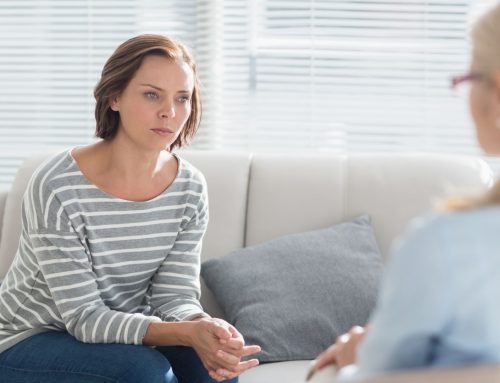The Netflix series 13 Reasons Why takes an in-depth look at the teenage experience and teen suicide. 13 Reasons Why isn’t just about suicide but it might as well be. I recently took some time out to watch the series and read the book because it had stirred up so my buzz in my Long Island practice.
Relationships are messy; especially for teenagers. For them, every combination of relationship is new territory. Peers, adversaries, authorities and love relationships all present their unique structure and challenges. Experience teaches you how to navigate relationships, but teens are experiencing everything for the first time. Each new experience is wrought with emotion, perception, wishes, desires, and fantasies.
Netflix even produced a stand-alone show which included mental health professionals, advocates, actors, producers and the writer to clarify their intentions and educate the public. They defended 13 Reasons Why and gave some compelling reasons for handling the variety of subjects including cyberbullying, sexual assault, substance abuse, and suicide, the way they did. I appreciate their efforts but the truth is, there is substantial research that depicting or graphically discussing suicide is not preventative. It creates a risk factor. This phenomenon is known as suicide contagion.
Suicide Contagion and 13 Reasons Why
“Suicide contagion” means that exposure to a relative, friend, or media figures’ suicide increases the possibility that people will view suicide as an option. It normalizes suicide. A suicide in a school or community brings out the fear, depression and unexpressed angst in that community. It contaminates people’s thoughts with doubt and shame. It becomes its own risk factor.
The entire series is a tragedy. Each character has their own trajectory of growth and pain. Suicide is the focus, but as the characters intersect and weave their way through high school, they face issues of sexuality, cyberbullying, self-injury, substance abuse, privacy/secrecy, and complicated parental relationships.
“13 Reasons Why” chronicles the life and explanation behind the suicide of Hannah Baker. Hannah leaves a series of cassette tapes for each of the people she holds responsible for her death. If that sounds sadistic to you, you are not alone. Hannah narrates the story, complete with maps and other directions, in a taunting and often sarcastic voice. I found the first few episodes difficult to watch due to the blatant revenge theme.
As I watched 13 Reasons Why I understood the appeal for kids, and I share the concern of parents. Suicidal fantasies are fueled by personal feelings of fear, anger, hopelessness, and revenge and unexpressed longing. Many of the teens I spoke with or who left messages on the show’s website, loved the series. They identified with the main character and found her story realistic and reflective of their own lives. Some teens went so far as to request this to be required viewing for adults to understand and bridge the generation gap. This movie expressed feelings about experiences that they aren’t able to express themselves. This tells me they have a desire to be seen and have their inner thoughts interpreted through the show. They want it to speak for them; especially if they lack the words or the courage.
Parents Reactions to 13 Reasons Why
Adults had quite a different reaction. Parents told me they thought it was over-sexualized, salacious and portrayed adults as out of touch, self-involved and eager to look the other way to keep the peace. Some schools have gone so far as to ban the book, though there is no way to keep the show out of kids’ hands.
13 Reasons Why offers a realistic dramatization of high school and college life for parents. To get a better understanding of what your child faces either directly or indirectly, watch the show with them. This is not, in my opinion, a good suicide prevention message. It is overly graphic and offers no solutions to the problems it depicts. It Leaves the viewer feeling hopeless and shocked. Watching it with your teen can offset this and offer some opportunity for communication. Ask questions about how their lives are similar and how they relate to the show. Ask if they have ever found themselves in any of those situations. If you create the space for them to open up, chances are, they will. Keep an open mind. Just sharing the experience with you is likely to be comforting to your child. If your child is depressed or in need of professional help, let them know its ok. Help them find a qualified mental health professional and assure them that things get better.
Most Importantly:
Know The Warning Signs of Suicide
- A person who is thinking about suicide may talk about being a burden, feeling trapped, broken or hopeless.
- They may exhibit a change in drug or alcohol use, changes in sleep or eating patterns.
- They may give away prized possessions or may an effort to reach out and say goodbye.
- They may seem more depressed, irritable, withdrawn or become unusually calm and serene.
- People are at greater risk if they suffer from a mental illness, substance abuse or chronic pain.
- People who suffer a stressful life event, divorce or family death or have access to firearms are at risk.
- People are also at greater risk if they are exposed to a suicide, have a previous attempt or family history of suicide,
Be kind. Express your concern and offer your ear. However subtle the changes you notice, this is an opportunity to talk about what is going on.
Let the person know you care and that you want to talk. Ask about the changes and don’t be shy when talking about suicide. Direct questions such as “are you thinking about suicide?” are usually a relief to a person who is having thoughts.
If you or anyone you know is depressed or having thoughts of suicide, Contact the American Foundation for Suicide Prevention https://afsp.org/find-support/ call the National Suicide Prevention Lifeline at 1-800-273-TALK (8255) or contact the Crisis Text Line by texting TALK to 741-741.




